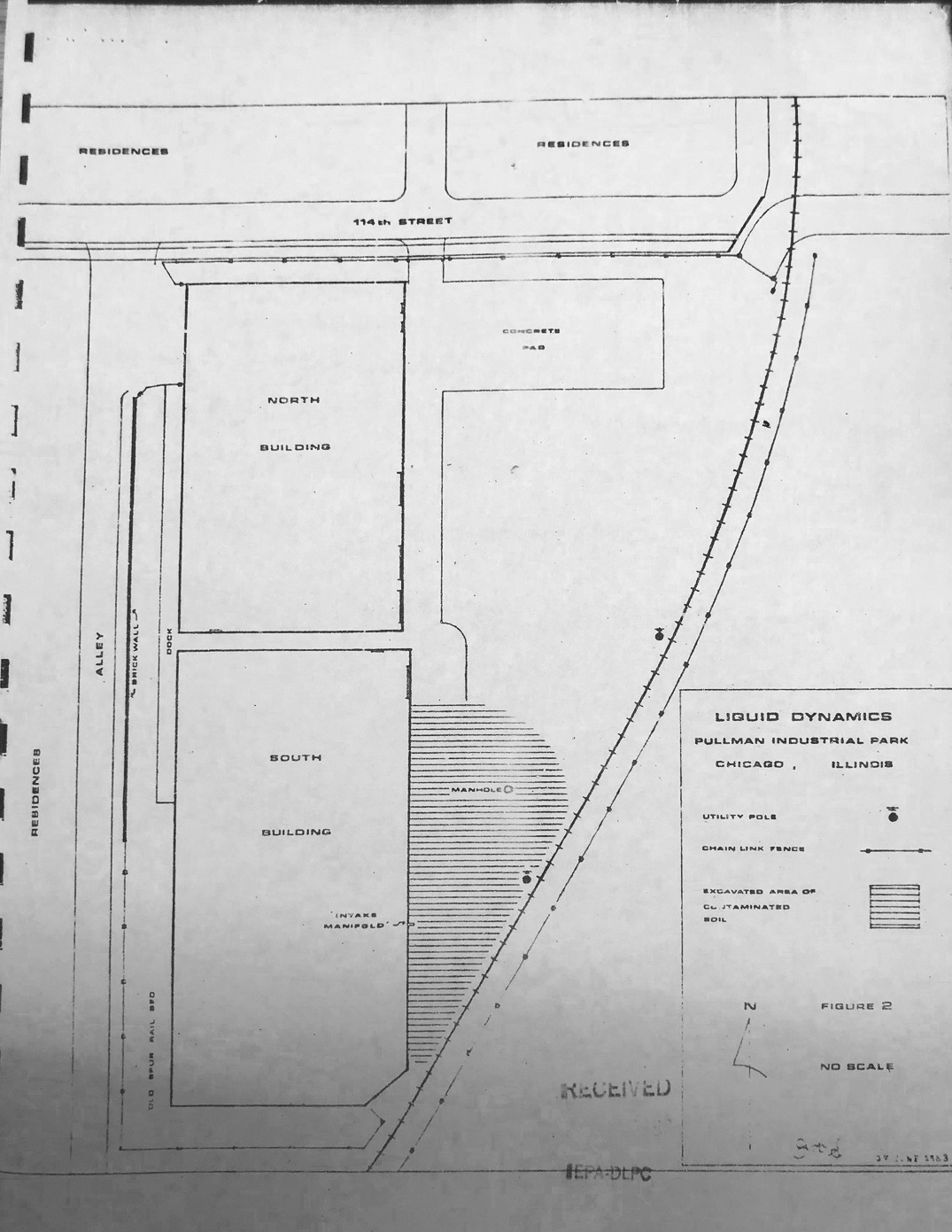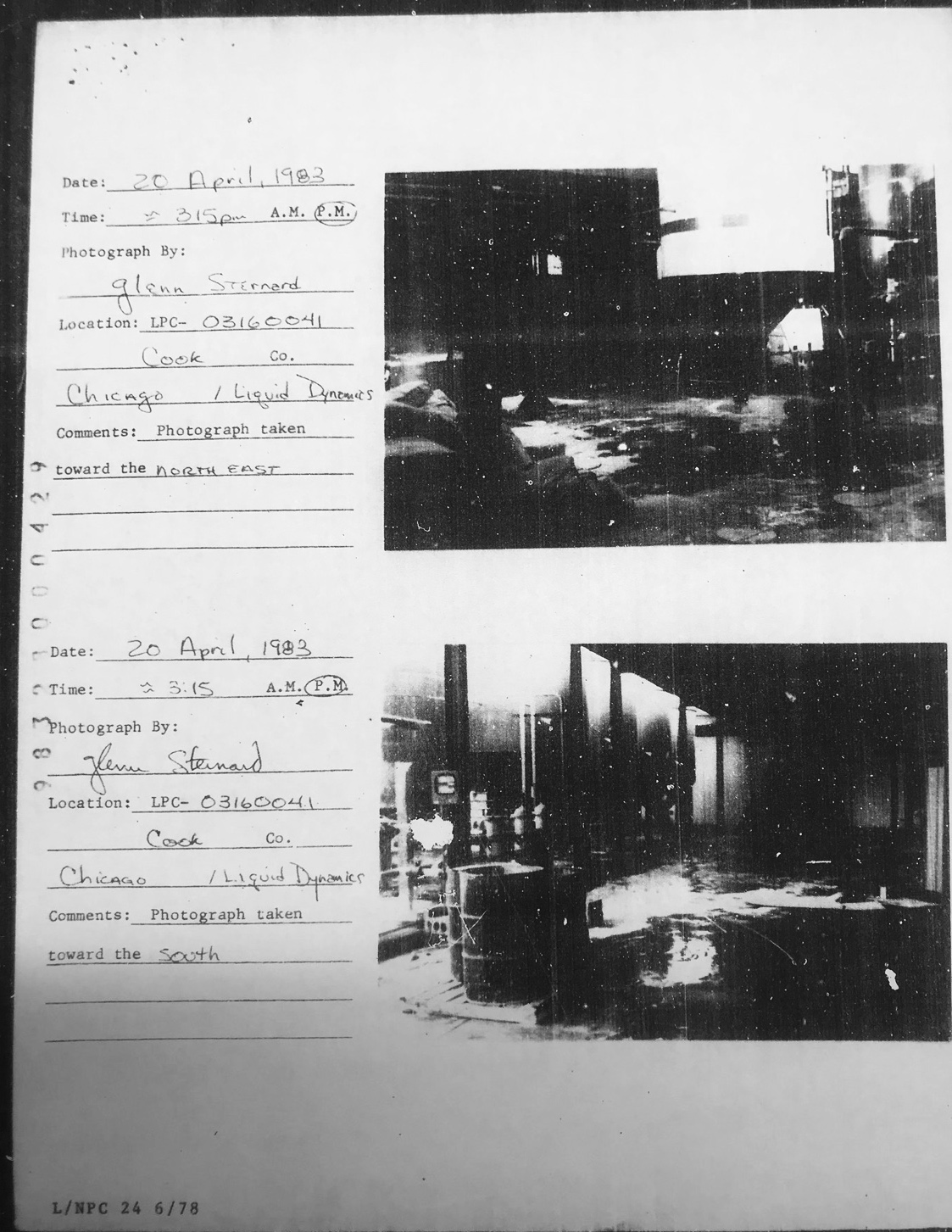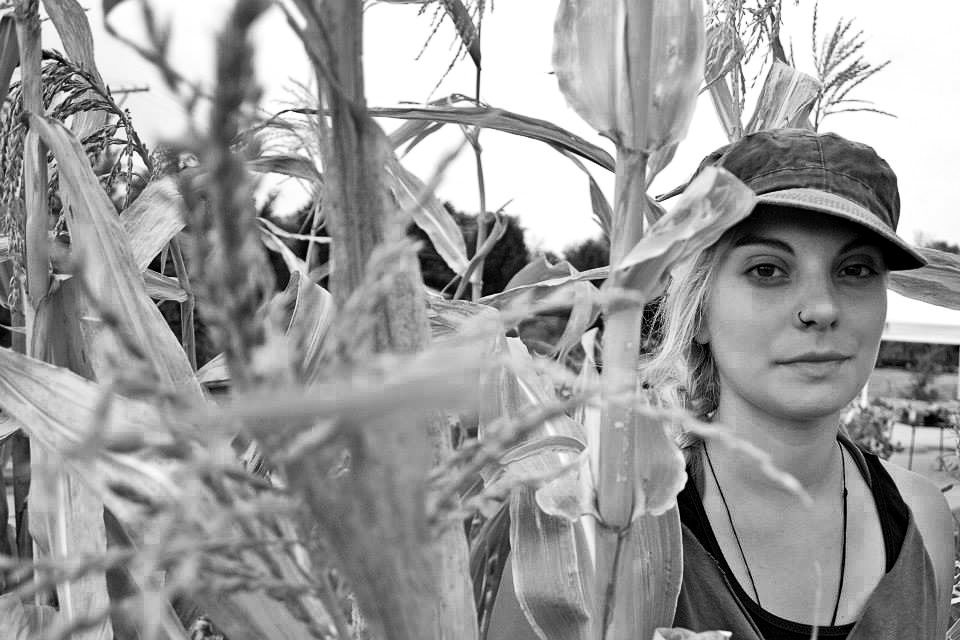Viviana Gentry Fernandez-Pellon is a fourth-generation Chicagoan who has taken on an issue they suffer from personally: environmental racism. Co-owner of the Chicago Mushroom Company, Fernandez-Pellon lives in the Pullman neighborhood, a three minute alley-walk away from the community garden they codirect called the Cooperation Operation. It is located on a formerly toxic site that neighbors forced the EPA to remediate (remove contaminants and restore ecological balance) in 1983. That process created public records that Fernandez-Pellon could request to view through the Freedom of Information Act. They did, and used the information to learn the history of the industrial uses—and remediation efforts—within the site. Today, they are using mushrooms, a method of bioremediation—accomplishing remediation through living organisms—to heal that soil, which has suffered from decades of industrial contamination. This interview has been edited for length and clarity.
THE COOPERATION OPERATION
In 2013, when I decided to pursue an agriculture project/community garden—the Cooperation Operation—with friends of mine and neighbors, we really had to look at the history of the land. If we’re choosing to grow our own food in our own neighborhood as a better health option, we better be making sure that it’s not making us sick at the same time because of the toxins that are inherent in that particular area—which we’re exposed to all the time anyway because it’s also our neighborhood and we live there!
The Cooperation Operation is on a formerly toxic site that was a vacant lot, viewed by neighbors as a “derelict property.” One of my good friends from high school grew up in the neighborhood and knew about it. We eventually figured out that it was owned by the city. So we would have to address the alderman of that ward in order to get official access to the property. In order to let them know that it’s not just us and our crazy ideas trying to, you know, build food sovereignty—that it’s something supported by the community—we went door to door with a petition, to make sure that people actually wanted a community garden there. We took all the signatures we were able to gather, I think upwards of 250, from just going door to door, and took that to the alderman’s office. We were like, “Hey, this is what we’re gonna do, can we have access to the land?” We didn’t have to pay, it’s public land because it’s owned by the city of Chicago.
Talking to neighbors, I learned the name of the most recent paint company that had been there. But it wasn’t really until I did a separate [public records] request that I was able to get most of that information. When I saw in their report the level of toxicity of some things that were present, it was kinda like “Whoa, okay, I’m not making this up, I’m glad I’m doing this bioremediation.”
THE TOXIC LAND BENEATH US
Growing in Chicago, you can pretty much make an assumption especially if you’re on the South or West Side that there is a toxic history to the site, that there is some kind of industrial past that you might not be aware of because of the way that residences and buildings are currently set up, but that doesn’t mean that there wasn’t something there before. That’s just historically where dirtier industries have been located in this city. As long as we have polluting industries this is always gonna be a problem. And that comes in so many different forms, whether that’s where a highway decides to get placed or if there’s a metal smelter facility or even if it’s just a particular type of company that has a lot of diesel trucks coming in and out—things that we’ve already seen happening in Chicago and people actively fighting against and being successful at. But I basically just trust that the city does not have my best interests in mind when it comes to health and when it comes to development. As long as there’s industry in Chicago this is something that we need to address and it would be smarter in my opinion to have it paired with this sort of remediation work rather than just continuing to add more and more toxicity until it’s just completely unliveable for humans. That’s when we’ll finally pay attention to it, regardless of if there’s three eyed fish in the neighborhood pond, or Bubbly Creek, or something like that.
Because of the toxic history of this site, the city gave us access to work officially on the former foundation of the building that used to be there, which required us to do all raised beds. We couldn’t dig into the ground [to grow] on the rest of the property because of its history.

In terms of contaminants, lead, cadmium, and arsenic were present, and petroleum-based stuff too. I think that was one of the reasons why the [public records were] most helpful, because you can really narrow down what you’re looking for. It informed us a little more on where we should do our up to date soil testing, just to make sure that things that were present in the past aren’t still there or breaking through [previous remediation methods]. So I was taking soil samples and sending them to a lab. What’s cool about these [public records] is that there’s maps of the site in a bunch of different forms, including a toxicity map and where buildings were. The perimeters of buildings, especially if they’ve been painted and are old, often are gonna have lead, asbestos. It’s good to understand overall the greater landscape and the unseen historical landscape of the space.
The idea to do bioremediation was born out of conversations with folks who had gone to different workshops, or heard about different things, or saw YouTube videos on mushrooms specifically and how you can work with mushrooms to remove toxicity, especially things that are petroleum-based products like paint, which was being dumped on the site before.
So many things that I’ve learned throughout the years has just been through what I call YouTube University. Just these how-to videos, people trying it out for themselves and wanting to share that information. I understood from the research that we needed to start with building organic matter on the site. We got in contact with the Bureau of Forestry of the City of Chicago. They have wood chip yards. So we had the Bureau of Forestry divert their truck of wood chips to our space once a week and we filled the entire two and a half acres with wood chips. Then we had one friend who was experienced with mushrooms spread spores and chunks of mushrooms they had grown or foraged and just put it in the wood chips and see what happens.
BIOREMEDIATION
We chose to work with oyster mushrooms because we have paint waste—petroleum-based products—present in the soil. And what oyster mushrooms, or rather oyster mycelium [the non-reproductive part of a fruiting fungus], is able to do as it moves throughout the soil, or a tree branch, or whatever it’s consuming, when it encounters these really long hydrocarbon chains, which is what petroleum is, it basically just is able to snip them with the enzymes that are exuded from each mycelial fiber. So it’s like roots moving through the soil, right? And it just kinda like digests it so it becomes, rather than this really long chain, it becomes these little parts that are no longer gonna cause the same type of harm that a hydrocarbon chain would otherwise.
The contamination is usually bound up with different minerals, recombined into other things. This process isn’t a quick process, it’s a slow process. I prefer to let it sit for at least a year and make sure that you’re also encouraging the full biology of the soil. I think of it as a co-creation process—respecting everything else—that I kind of just leave to the chaotic beauty of it all, you know?

DREAMS FOR THE SOUTH SIDE
I grew up on the South Side of Chicago, yeah I live in a city, yeah I very much identify as being a city dweller, right? But even that land has history and it’s affecting you in real time at this very moment — and don’t ever think it’s not, because you carry that with you and it surrounds you so how could it not have an effect?
I think food and medicine sovereignty are very, very important, especially in relation to understanding your own relationship to liberation. I dream of a South Side that has lots of food growing all over the place, where we don’t have to fear the soil around us, or the water. Where it’s really thriving and people aren’t all having the same disease concentrated in a particular area because of immediate effects of the environment! I would love to leave Chicago and come back and still be able to breathe okay. You know? To not be worried that every time I drink water from the tap that I’m just adding toxicity to my body. To just know that I don’t have to be worried about the next generations, knowing that toxicity has just accumulated in our bodies through our generations and it affects our DNA—to not have to worry about that. That would be great, that would be really lovely and beautiful to me. To know where my food is coming from, to foster a sense of trust among the people who live around me and the neighbors. To just do right for ourselves.
Contact Viviana at viviana@auachicago.org for more information on how to approach bioremediation work. They also recommend checking out the Little Village Environmental Justice Organization and Southeast Environmental Task Force for similar projects.
xiili sarkela is a research scientist and artist based in Chicago (occupied lands of Miami, Illinois, Potawatomi, and more). xiili works at the intersection of fungi, fashion, and justice. Find kyr theorizing on material culture on Instagram at @hyphaenate.


Great story, thank you for reporting it! And thank you, Viviana, for your hard work!
All I can say is wow!!!!
Thank you- thank you. How to begin- I’m a 3rd gen. Chicago baby boomer raised in Dolton moved out West and came home again 65 yr.-old hippie who loves seeing the younger gen. gain interest and control in our future on Mother Earth. Your good work is its own reward. Believe it.